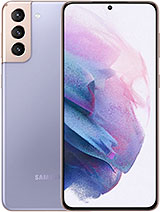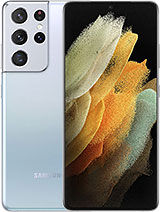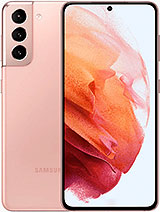Galaxy S21 Ultra vs Galaxy S21 Camera Test Review: Finally Worth It? By Danny Winget
What's up everybody. This is Danny, and today I've partnered with Qualcomm to give you an extensive camera review of the galaxy s21 ultra- and I know a lot of you have been wondering how does the 400, cheaper galaxy s21 compare in image, quality, and I'll answer that later on in this video, but I have a lot to go over, so let's just jump right into it. So first, let's talk about the camera hardware. On the galaxy s21 ultra you get a 108 megapixel main sensor. Then you get a 12 megapixel ultra-wide, but this is a little unconventional, but you get two dedicated zoom lenses here, a 3x and also a 10x, and we will see the advantages of that a little later on in the video, and you also get a laser autofocusing system on the galaxy s21. You get a 12 megapixel main sensor with dual pixel autofocus.
Then you get a 64 megapixel sensor that crops in for 3x hybrid zoom, and then you also get a 12 megapixel ultra-wide, so they are very different when it comes to set up. Since I've been using this phone for a couple of weeks now, I want to talk about my experience with it and the performance of the camera. The first thing that I noticed right away is just how much faster the camera experience is especially coming from the galaxy s20 ultra, not saying that the older phone was bad in any way, but you just notice the speed difference right away. This has to do with the brand new Qualcomm snapdragon 888 processors and its first ever triple ISP the spectra 580. What that means is that the main the ultra-wide and the optical zooms have their own image signal.
Processor. That's why it's so lightning, quick! When you change between all of them, you can easily switch from the ultra-wide all the way to the 10x zoom, and it's buttery smooth and, of course, on the ultra. You can go all the way up to 100x zoom that speed increase to 2.7 gigapixels per second processing, helped on the speed of the camera. App so Qualcomm definitely came through this year and gave Samsung a lot of raw horsepower to play with, and what's awesome is that horsepower is not just in the more expensive ultra, but it's also in the s21, which is cheaper. So that is amazing, especially for the price point.
So, let's start with the daytime pictures, I don't think it's a surprise that the galaxy s21 ultra and the s21 take fantastic photos during the day they are full of dynamic range. The colors are great and full of detail. You do still get that Samsung slight over exposure in some pictures, but that is a look that some people really like, and I don't blame them because it makes the overall picture look brighter with some vibrant colors, with all of my testing. So far, it seems like Samsung is leaning towards the natural side of color, which I really like so for the most part you're going to get absolutely stunning pictures in good lighting. There are times when you get some clipping here and there, but I'm hoping that Samsung figures this out through some software updates, in fact shooting this video.
Today I just got the February patch, so that's why I'm retaking a lot of pictures to put in this video, so Samsung does update their camera. Very often, the skin tones have definitely improved, especially with selfies. Now you get a natural and bright mode, which is nice, so I'm going to take a shot at natural, and now I'm going to take one with bright. Let me know which one that you think looks better. So portrait mode has been really great on this phone I've been enjoying taking pictures of my family with it.
I would say it's one of the more accurate portrait modes that are out on the market right now. The one thing that you will notice, though that is not using the 3x at all for the portrait mode, is using the main sensor. If you cover up that 3x back there it'll still work, so hopefully they'll give us that as a focal length option in the future. The reason why I love this camera system, so much is because of the flexibility, I'm an iPhone 12 Pro max user as well, and having that 2.5 x, telephoto lens, is great, but having a 10x optical in your pocket really does change the game. So here's an example in real life.
You get that one extra perspective that you didn't know that you could use. So, of course you have that awesome ultra-wide. You have that main, and then you have that 3x, but then that 10x- and here I can get a unique perspective of the top of the building- you can digitally zoom to 10x on any phone. I know that, but the quality difference is definitely noticeable and the advantage of that 10x zoom is the hybrid zoom gets even better. So the 30x shots also look a lot cleaner and then, of course, the 100x shots look better too, but I still don't think it's usable at least for images anyway, but it can be good to read something really far away or if you just want to be kind of a creeper.
Oh, what are they doing over here? All right? So see those pigeons over there. This is another cool thing about having this type of optical zoom check this out. If I zoom into 10 here, look at the depth of field that I get on video, which is insane it looks so good now, if you really want to take advantage of that 14 bit spectra 580 ISP then shoot in raw in pro mode, because now you get 12 bit raw, which is insane. This is perfect for professionals that want to shoot with just what's in their pocket or if you just want more control over your image before you take the shot. Even if you're, not a pro, don't be afraid to try this out because it does save the brawl and the JPEG image at the same time.
So you have one to share, and you have one to post edit, and you can get good over time. So, if you're coming from the galaxy s20 ultra, then you know the pain of having bad autofocus. So do not worry about that on the galaxy s21 ultra, because the autofocus is much better. Here is a side by side from my camera comparison, and you can see that the focus is pretty much the same during the day. But when you get into low light, it's a whole different story.
You can see that the s20 ultra is struggling to keep focus while the s21 ultra is keeping focus almost every single time. Once in a while during video, I will see some focus hunting on the galaxy s21 ultra, but for the most part it's very reliable. I love shooting in the city because any excuse to use the ultra-wide. I will, I love the perspective. Furthermore, I know that you get distortion on the sides, but it's such a unique look, and this is one of the camera lenses that I cannot live without.
If I choose one lens, I choose the ultra-wide and look at how weird this thing is. You could take a picture of this by itself, but using an ultra-wide, you can get some really cool views boom bam. Look at that haloing right there from the sun flare, that's amazing and look at these feet. So, let's talk video before we jump into low light.4K video looks fantastic from the galaxy s21 and the s21 ultra. I think it's the best video on a smartphone only second to the iPhone 12 Pro max.
There's really no difference in 4k quality between the s21 and the s21 ultra both get 4k 60 frames per second on all the camera lenses, which is great, but for some reason you can't switch in between the cameras while you're recording. I'm not sure why 8k video is still here, amazing that you can get 8k video from your smartphone. Both have pro video mode which supports 8k. By the way, it's probably the best way to shoot 8k. So you have control over focus and all the other things that you need.
The one thing that I really wanted to see that we didn't get is 4k 120 frames per second, the Qualcomm snapdragon 888 is capable of 4k 120 frames per second, so I'm kind of bummed that it didn't make it here, but I'm sure it'll debut later on, maybe with the note series. But there is a brand-new feature called director's view, which shows you all of your camera angles at once, and this is all thanks to that triple ISP right now you can only choose between the three camera angles, while you're recording this is pretty cool for reaction videos or maybe, when you're filming your kids, or I guess, if you're, making shoe videos. So let's go ahead and jump into the low light, which is everyone's favorite topic, and I'm happy to say that if you're a galaxy s20 ultra owner, then the galaxy s21 ultra has much better video at night, because if you're a s20 ultra owner, you know the pain of muddy video, noisy video. It's pretty much unusable the Achilles heel of that device, and it's not the case on the new phone. So if you like taking a lot of nighttime videos, it might be worth the upgrade and another new feature that not a lot of people are talking about.
Is the portrait night mode feature, and you do have to get into darker conditions to make it work. You'll know that it's working because there's a little moon icon on the right corner. Unfortunately, this feature is not available on the regular s21. Only on the ultra, it looks so much better. This will make you shoot a lot more nighttime portrait shots and, what's awesome, is it's also available on the front-facing camera as well, which makes a huge difference.
The only downside is that you have to stay still for a couple of seconds while it exposes you like a regular nighttime shot, but it's totally worth it looks at the difference. The one thing that you do need to know about nighttime portrait mode. Is it only works in the wide field of view, so the crop view it doesn't work. You go back to the wide you'll see that nighttime pop back up, so you can only use this focal length on low light. Photography where you're going to see the difference is, is just in the single snap.
It's really fast, and you get much better noise reduction, and you get a sharper picture without night mode. That's probably the biggest difference now with night mode. I don't see a huge improvement from the last series, so if you own a Samsung phone within the last year, or so like the note 20 ultra, then this is not a huge leap. A lot of people don't know that you can get night mode across all the cameras, so here is a night mode on the main to the 3x, but the 10x night mode shots. This is where you're really going to clean up here.
Here are a few nice tips on night mode. If you think that your night mode shots are just a little too bright or not as natural, what I would do is I would bring down the exposure a little first and then take the night mode, shot you're going to get a much more natural, looking nightmare shot. But if you just want the brightest picture, hit that auto button and then go to max, and you're going to see that it goes up a couple of seconds on exposure and if you have a tripod put it on there, and you'll, see the exposure go all the way up, and you're going to be able to get some amazing results if the scenery calls for it. Unfortunately, the moon isn't out tonight, but I'm sure that you've heard of those amazing 100x moonshots and while I was in Tampa last week, I took a ton of these. It's actually really easy to do.
All you have to do is make sure that the scene detection is on, because, if it's not on these moonshots will not work. All you have to do is line the shot up and as soon as you hit into 30x you'll see the moon clear up and all the details will be there. It's really amazing, and it also stabilizes for you, which is great so getting these moonshots handheld is no problem. Not everybody will be into this, but it's amazing to have that kind of power in your pocket. So to wrap things up, I want to answer that question.
Is the 400 cheaper galaxy s21 really that different in image quality than the galaxy s21 ultra, which is much more expensive? And the answer is, after all, the testing? Even after the new February patch that I got today, I have to say: there's not a lot of difference when it comes to the actual image quality itself. So I went around and took a bunch of pictures today. I did notice that there is some better dynamic range on the galaxy s21 ultra, which is expected. You can see it in multiple pictures. It does handle bright situations better.
So when it comes to color sharpness and just overall image quality for the average consumer just snapping on auto, I don't think that you'll really notice a huge difference. Now there are some differences like you, do get 64 megapixels versus 108, megapixels and, of course, the 108 megapixel shots are sharper when you crop in really heavy, but the real reason that you would go for the ultra are the zooms because, like I showed you, the 3x and the 10x zoom really great and the 30x zoom is even usable. The hybrid zoom on the galaxy s21 will work in a pinch, but anything past 10x, and then you can really see it break down. The 30x is not even a contest and, of course, if you want that 100x zoom, you have to go ultra, it all depends on what you need and what matches your shooting style, and even though that the differences aren't huge, it's all the little things that add up like the nighttime portrait mode and if you'd like to take macro shots up close there's. A new focus, enhancer feature that switches seamlessly to the ultra-wide to help you get that clear shot.
But that's what makes the galaxy s21 ultra probably the most versatile camera system out there on the market, but you will pay a premium. So if you don't care about those features, I would probably just pick up the galaxy s21 or the s21 plus. I think you're going to be happy with this one, because this year's camera system really, really great one of the best. That's out there right now, so that about wraps it up. Let me know what you think about the galaxy s21 and the galaxy s21 ultra camera.
Let me know which one that you would pick up if this video helped you in any way make sure you hit that thumbs up and subscribe for a lot more videos like this, and thank you to Qualcomm for sponsoring this video, the snapdragon 888, is a beast. I cannot wait until all of these features are implemented because the power of that chipset and that triple ISP is amazing, and I can't wait to see other flagship phones really push their cameras to the next level because of this chipset I'll see you guys in the next one.
Source : Danny Winget








![Realme X7 Pro vs OnePlus 8T Speedtest Comparison [Dimensity 1000+ vs SD865]](https://img.youtube.com/vi/2W91Pzsry8M/maxresdefault.jpg )






![Samsung Galaxy J6 Plus (Red) - Unboxing & Review [HD]](https://img.youtube.com/vi/VEd7NXMlk-I/maxresdefault.jpg )











